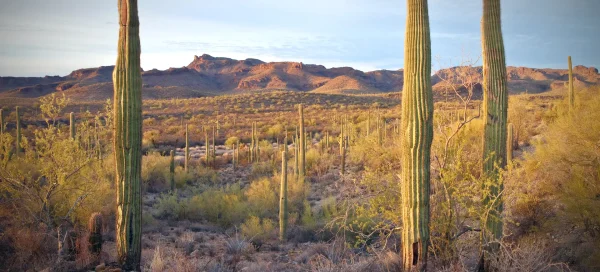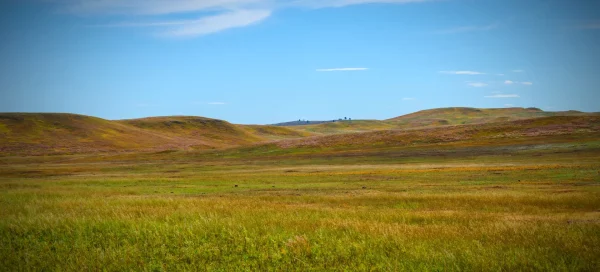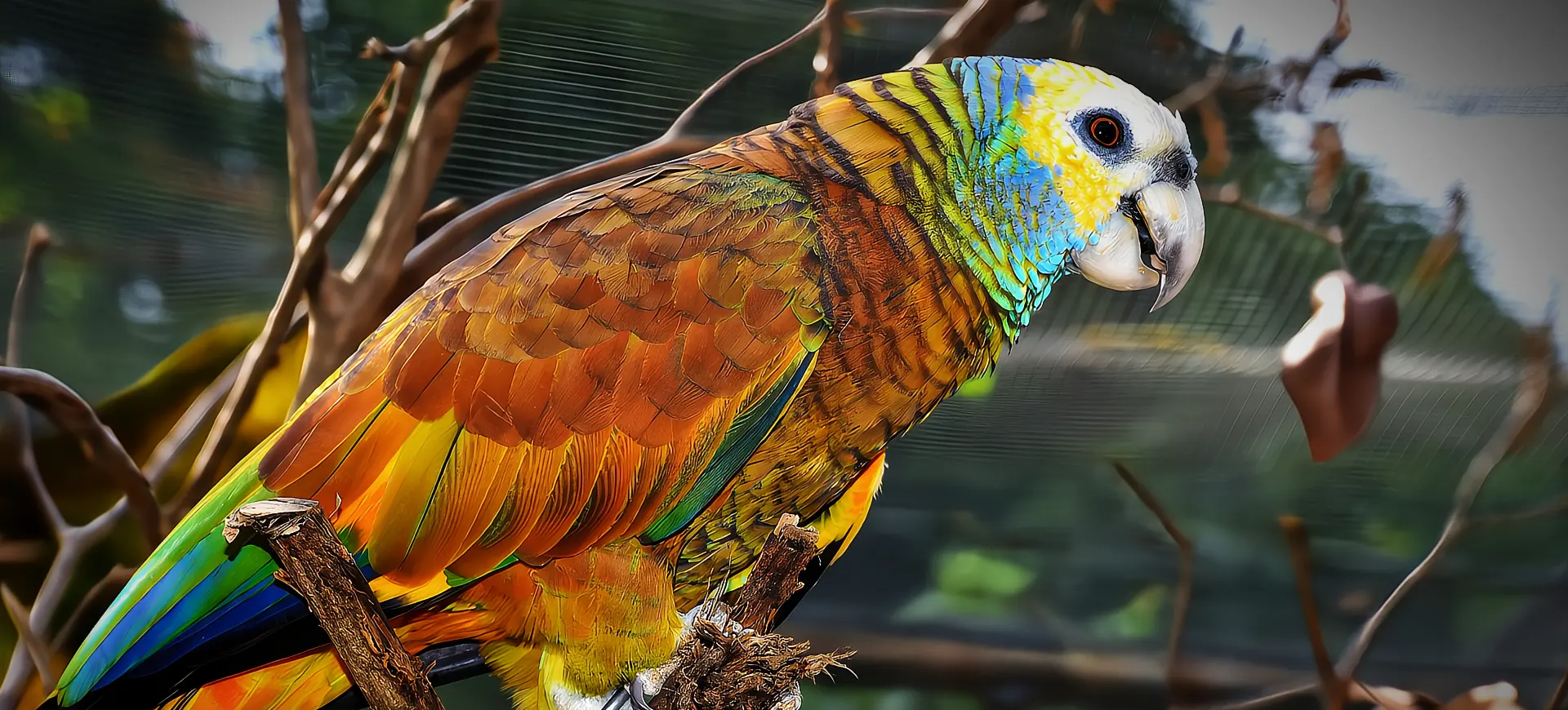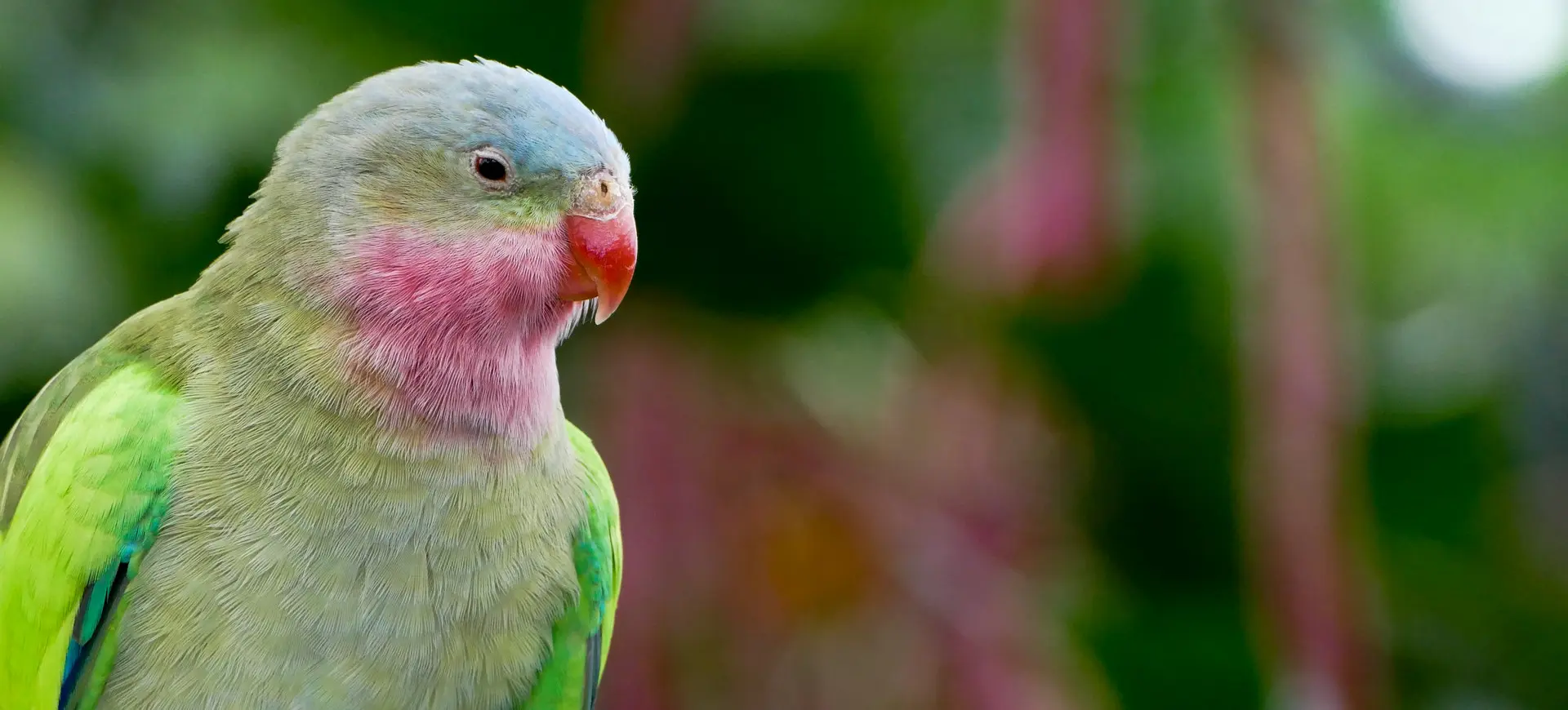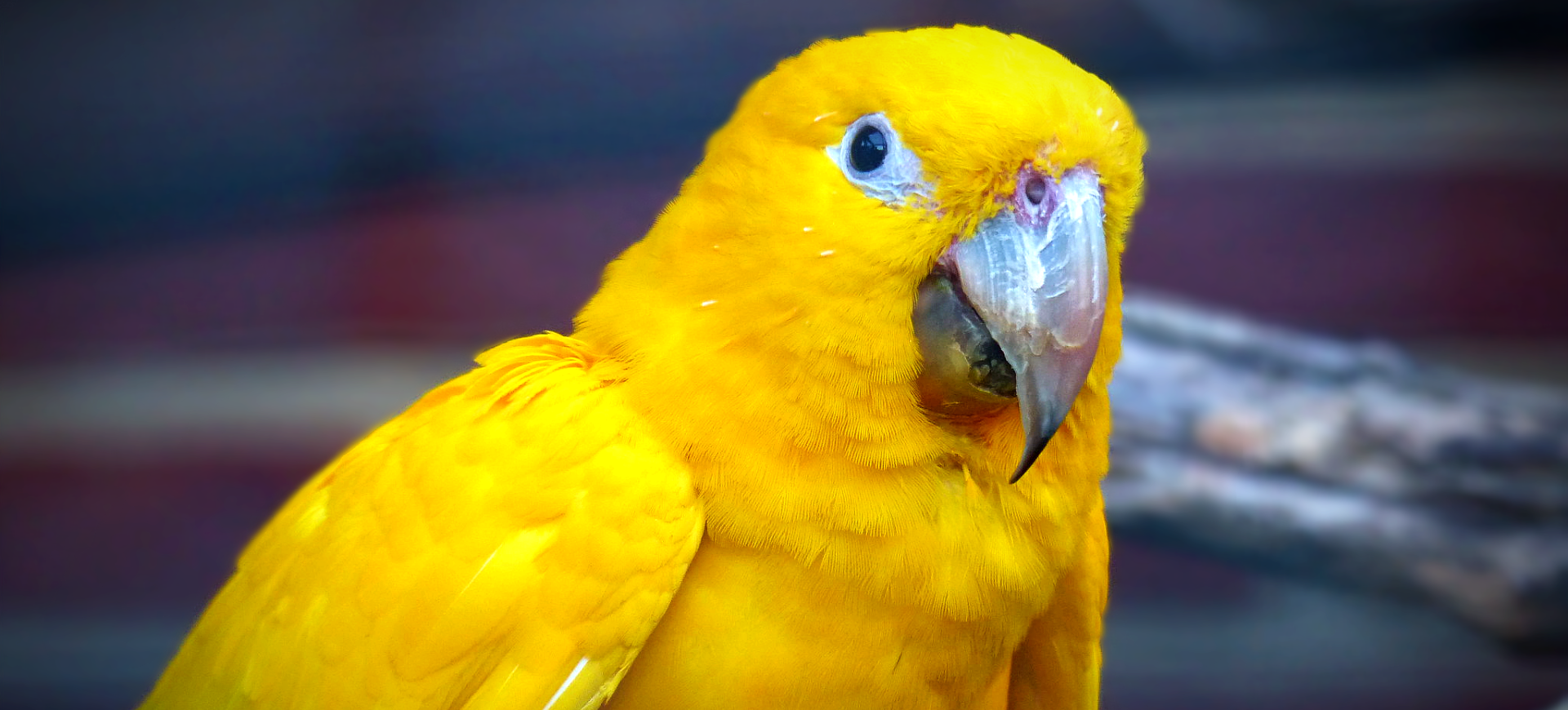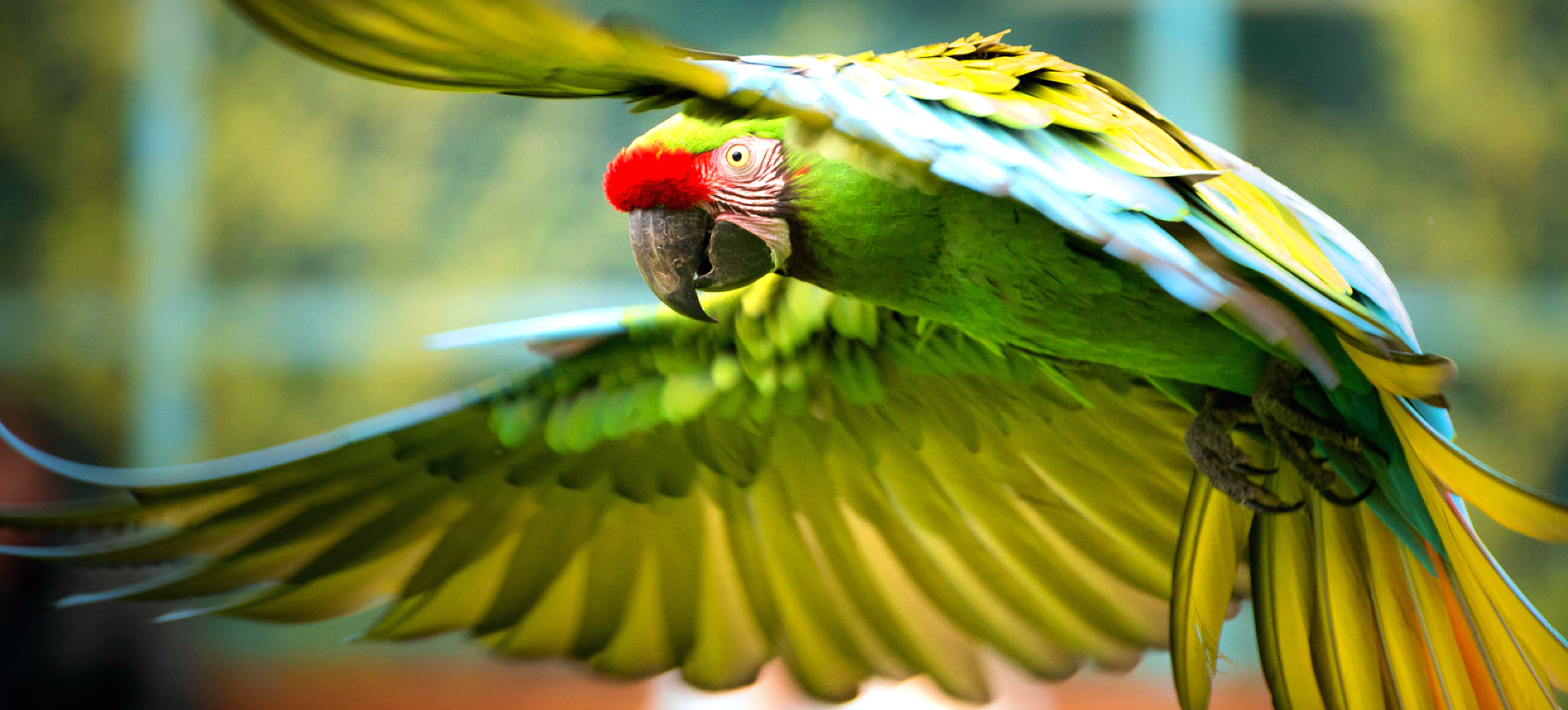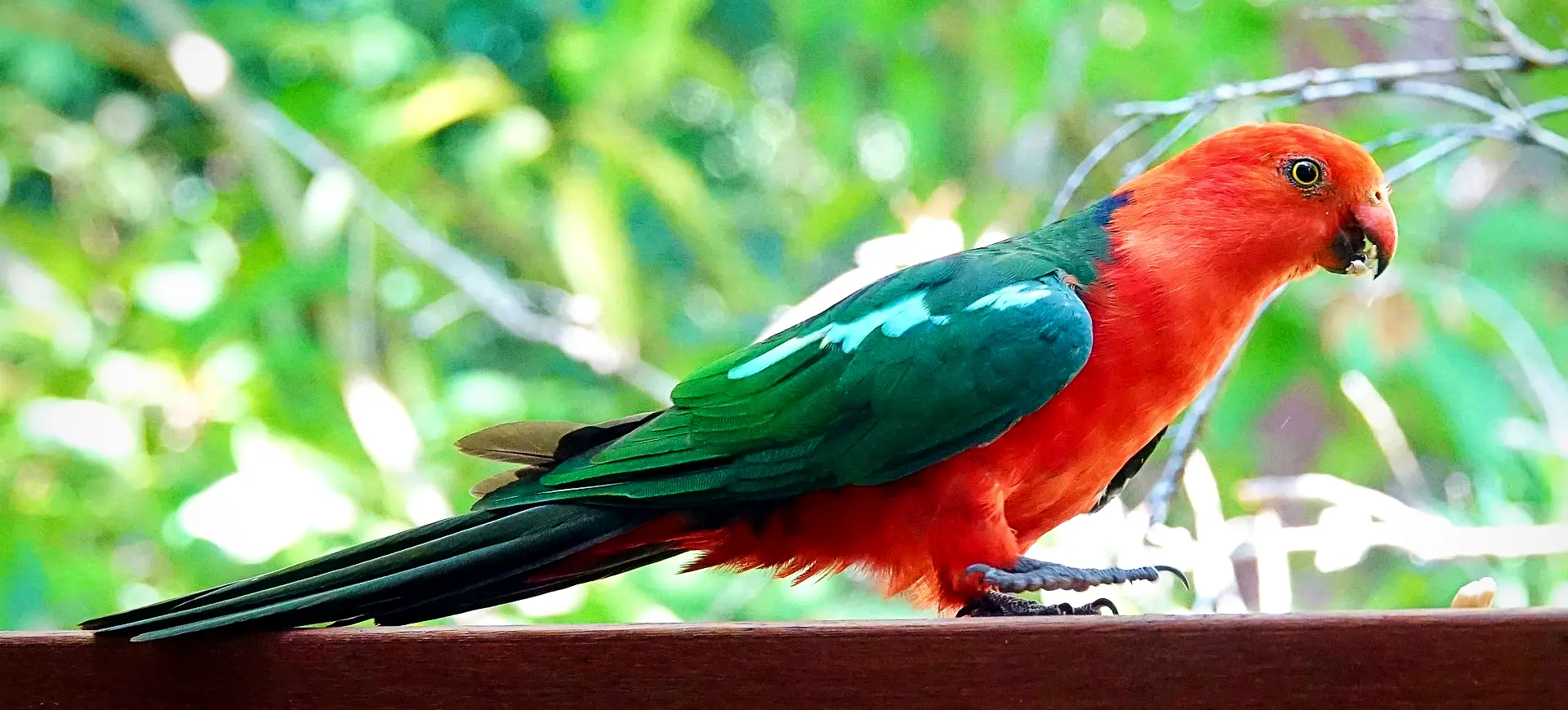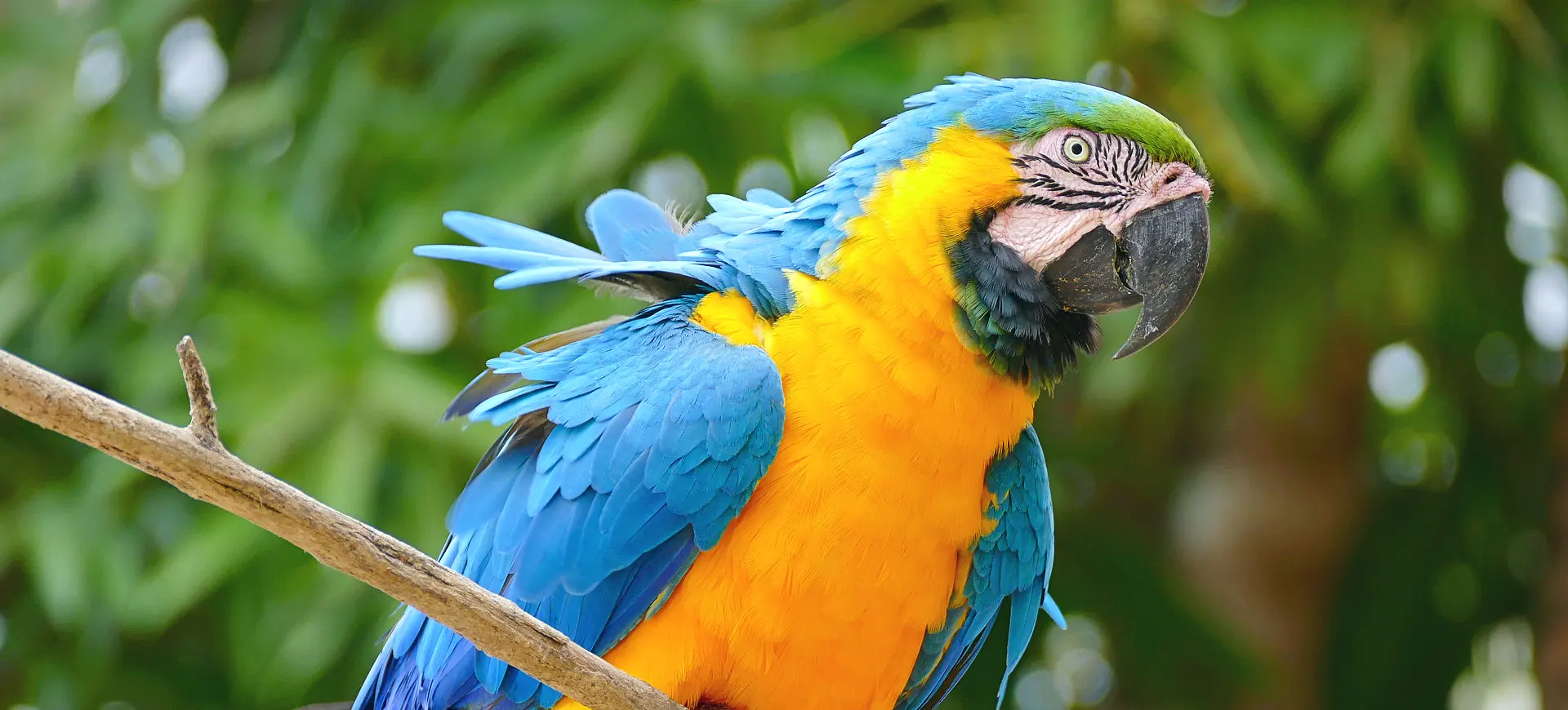Overview
The Red-fronted Macaw (Ara rubrogenys) is a medium-sized parrot known for its striking appearance and vibrant colors. Native to a small mountainous region in Bolivia, it is a smaller species of macaw. It stands out due to its bright red forehead, shoulders, and underparts, contrasting with green upperparts and a blue rump. The area around its eyes is devoid of feathers, showing white skin, and the tail is long and pointed, with colors of blue and red. These birds are highly social and vocal, often seen in pairs or small groups.
Red-fronted Macaws are recognized for their intelligence and affectionate nature. They form strong, lifelong bonds with their mates and are known for their playful and curious behavior. In the wild, they prefer to nest in cavities on cliff faces, which offer protection from predators and the elements. Their calls are loud and can be heard over long distances, serving to communicate between individuals and groups.
Unfortunately, the Red-fronted Macaw is facing critical challenges in the wild. It is classified as Endangered due to its limited range, habitat loss, and capture for the pet trade. The species’ survival is threatened by the degradation of their environment, primarily due to agriculture and the felling of trees for firewood. Conservation efforts are in place to protect these beautiful birds, focusing on habitat preservation, breeding programs, and local community involvement.
Taxonomy
Kingdom
Phylum
Class
Order
Family
Genus
Species
Type
Physical Description:
Red-fronted Macaws are medium-sized birds with a robust and streamlined body. The most striking feature is their bright red forehead, throat, shoulders, and underparts, contrasting beautifully with the green feathers covering the back and wings. The lower back and rump are a vivid blue, which becomes particularly noticeable in flight. The tail feathers are long and taper to a point, displaying a mix of red and blue.
These macaws have a bare facial patch around their eyes, a typical feature in many macaw species. Their eyes are expressive and surrounded by white skin, which can flush to pink when the bird is excited or stressed. Their beak is strong and curved, capable of cracking open tough nuts and seeds. While sexual dimorphism is not pronounced in this species, males may be slightly larger and have slightly brighter coloring than females.

Lifespan: Wild: ~50 Years || Captivity: ~60 Years

Weight: Male: 0.9-1.1 lbs (400-500 g) || Female: 0.9-1.1 lbs (400-500 g)

Length: Male: 22-24 inches (55-60 cm) || Female: 22-24 inches (55-60 cm)

Wingspan: Male & Female: 30-32 inches (76-81 cm)

Top Speed: 30 mph (48 km/h)
Characteristic:
Native Habitat:
The Red-fronted Macaw is endemic to a small area in south-central Bolivia, where it inhabits dry valleys and canyons with sparse vegetation. These areas are characterized by rugged terrain, with cliffs and rocky outcrops, providing suitable bird nesting sites. The climate is semi-arid, with significant temperature fluctuations between day and night. Vegetation is typically sparse, with cacti, thorny bushes, and small trees dotting the landscape.
Despite the harsh conditions, these macaws have adapted well to their environment. They are often seen flying over the valleys or perched on cliff faces, where they nest and roost. The Red-fronted Macaw’s limited range and specific habitat requirements make them particularly vulnerable to environmental changes and human activities.
Climate Zones:
Biomes:
Biogeographical Realms:
Continents:
Countries:
Diet:
Diet & Feeding Habits:
Red-fronted Macaws are primarily herbivores with a diet of various seeds, fruits, and nuts native to their habitat. They are particularly fond of hard seeds and have the strong beaks necessary to crack them open. In addition to these staples, they may occasionally consume leaves, flowers, and even insects. Their feeding habits play a crucial role in seed dispersal, contributing to the health of their ecosystem.
In the wild, these macaws visit clay licks, where they ingest mineral-rich soil. This behavior is believed to help neutralize toxins found in some of their food sources and provide essential minerals. In captivity, their diet must be carefully managed to mimic natural feeding as closely as possible, often including a mix of commercial pellets, fresh fruits, vegetables, and nuts and seeds.
Mating Behavior:
Mating Description:
Red-fronted Macaws are monogamous birds, forming strong pair bonds that often last for life. During the breeding season, pairs engage in elaborate courtship displays, including synchronized flying, loud calling, and mutual preening. These behaviors help strengthen the pair bond and ensure cooperation during nesting and raising young. The birds are highly vocal, using a variety of calls to communicate with their mate and other individuals.
Nesting typically occurs in natural cavities on cliff faces, which offer protection from predators and the elements. The female lays two to four eggs, which she incubates for about 26 days. The male plays an active role in feeding and protecting the female during this time. Once hatched, the chicks are altricial and depend entirely on their parents for food and care. Both parents feed and care for the young until they are ready to fledge.
Reproduction Season:
Birth Type:
Pregnancy Duration:
Female Name:
Male Name:
Baby Name:
Social Structure Description:
Red-fronted Macaws are social birds, often seen in pairs or small family groups. They form strong pair bonds with their mates, typically maintained for life. Outside the breeding season, they may congregate in larger flocks, especially in areas with abundant food resources. These gatherings are noisy and lively, with birds communicating through various calls.
The social structure of the Red-fronted Macaw is crucial for their survival, providing protection, mating opportunities, and assistance in finding food. The birds engage in mutual preening and share food, strengthening social bonds. Despite their social nature, they require large territories and can be territorial, particularly during the breeding season. Understanding their social structure is important for conservation efforts, as it affects their habitat needs and behavior.
Groups:
Conservation Status:
Population Trend:
The wild population of Red-fronted Macaws is critically low, with estimates suggesting fewer than 1,000 mature individuals remaining. The population is fragmented and confined to a limited range, making them particularly vulnerable to threats. Despite their adaptability, habitat loss and capture for the pet trade continue to pose significant challenges to their survival. The population’s small size and isolated nature also make them susceptible to genetic bottlenecks and reduced genetic diversity.
Conservation efforts, including habitat protection and captive breeding programs, are crucial for the survival of the Red-fronted Macaw. These initiatives aim to increase the population, preserve genetic diversity, and eventually reintroduce birds into the wild. Education and awareness campaigns are also essential to reduce the demand for wild-caught birds and promote the protection of their natural habitat.
Population Threats:
The primary threat to the Red-fronted Macaw is habitat loss and degradation, mainly due to agricultural expansion and logging. Removing trees and altering the landscape reduces food availability and nesting sites, which are critical for survival. Additionally, the capture of birds for the illegal pet trade has historically impacted their population.
Other threats include competition with other bird species for nesting sites, predation by natural predators, and potential impacts of climate change on their habitat. The limited range and small population size make them particularly vulnerable to environmental changes and catastrophic events. Addressing these threats requires a comprehensive approach involving habitat protection, law enforcement, and community engagement.
Conservation Efforts:
The Red-fronted Macaw’s conservation efforts focus on habitat protection, research, and community involvement. Several protected areas have been established in their range to safeguard the remaining populations and their habitat. These areas provide refuge from habitat destruction and illegal trade activities. Conservation organizations are working with local communities to promote sustainable land use practices that benefit the people and the macaws.
Captive breeding programs have been established to increase the population and potentially reintroduce birds into the wild. These programs are crucial for maintaining genetic diversity and providing a safety net for the species. Education and awareness campaigns are helping to reduce the demand for wild-caught birds and promote the protection of the species. Ongoing research is essential to understand their ecology, behavior, and needs, which inform conservation strategies.
Additional Resources:
Fun Facts
- The Red-fronted Macaw, also known as Lafresnaye’s Macaw, was named after the French ornithologist Frédéric de Lafresnaye.
- They are one of the smaller macaw species, making them less intimidating and more approachable in captivity.
- Their ability to mimic human speech and sounds has contributed to their popularity as pets despite the negative impact on wild populations.
- The striking red coloration on their forehead, shoulders, and underparts makes them one of the most visually distinctive macaw species.
- They are capable of strong, agile flight and can navigate through their rugged, mountainous habitat with ease.
- The Red-fronted Macaw’s diet includes seeds from local plants that are toxic to other animals, but they can detoxify these with the help of minerals from clay licks.
- Despite their Endangered status, they are known to be adaptable and can live close to human settlements, feeding on cultivated crops.
- Despite their relatively small population size, their loud calls and social nature make them easy to spot in groups.
- Conservation programs for the Red-fronted Macaw include habitat protection, breeding programs, and local education initiatives.
- The species’ scientific name, Ara rubrogenys, refers to this beautiful bird’s red (ruber) cheeks (genys) characteristic.


